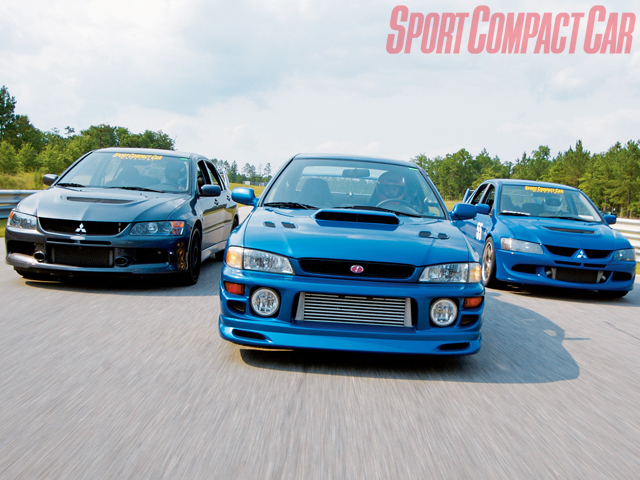
Last Mile of Analytics

Book Review: The Naked Entrepreneur by Troy Hazard and Maria Elita
A stroll down memory lane from my previous business, where my daily life was all about cars, race tracks, writing, and tech….
My Love For Mitsubishi Evo’s
I wrote this article for Sport Compact Car Magazine back in 2007. The Mitsubishi Evolution originally intended only for Japanese markets, but demand on the grey import market led the Evolution series to be offered first in Europe and then years later in the US, was my project car for the company. Along my side, there were many contributors and sponsors that helped make the car what it is today. I continue to be grateful for this experience and time; it stays with me as a driver to continue pursuing opportunities that I’m passionate about. I still have the project Mitsubishi Evolution in storage and plan to restore back to a like-new condition with my 11-year-old son. I look forward to writing and sharing its rebirth in the coming months!

Does Four Times The Price Mean Four Times Better?
writer: Ali Allage
photographer: Devin Lefevere
Not everyone can afford the 35 large required to buy a new road-going rally car from Mitsubishi or Subaru. But almost anyone can afford to buy a used Subaru Impreza GC8. And the best-used GC8 has to be the 2.5 RS. It weighs over 430 pounds less than its modern-day equivalents. It has all-wheel drive and its Japanese cousin came with a turbocharged engine that put out more than 276bhp.
The more numbers we plugin, the more curious we become. Available for around $7000-$8000 at the time of writing, we wondered what the $25,000 premium of a new car was really worth. We had to find out. Mitsubishi graciously supplied us with a brand-spankin’ new Mitsubishi Evo IX MR, but the challenge would be finding a clean Impreza 2.5 RS. We eventually found Pirouz Sichani from Dynamic Power Solutions in Maryland, who had a 2.5 RS that was pristine enough to eat off. He bought the car new in 1999 and has been wrenching on it ever since.
Sichani’s Impreza is no ordinary 2.5. With the same displacement as stock, the car uses an EJ257 swap with a custom Turbonetics T3/T4OB turbo kit. According to Sichani, the car is capable of about 320 wheel-hp. That’s a lot of power for a car weighing less than 2900 pounds. Often mistaken for a standard 2.5 RS, Sichani reports that many overly-anxious 350Z owners get a big surprise when they try to intimidate this car.
To even out the playing field a little, we’ve thrown in a lightly modified Mitsubishi Evo VIII from www.evolutionm.net. It represents a good example of how a few careful modifications fit together to achieve a well-balanced car; nothing is over the top. The guys at evolutionm.net claim this Mitsubishi Evo dynos at 352 wheel-hp, making it the hardest hitter of the bunch by a reasonable margin.
Initially, we wanted to put the cars on an autocross course, but bad weather foiled that plan. No matter, all three cars are better geared for track duty than the tight coned corners of an autocross anyway. As it turns out, we get some track time at Carolina Motorsports Park in Kershaw, South Carolina, for a full day of testing. As an added bonus, the interim between canceled autocross and eventual track day allows us to get a feel for the cars as daily drivers.
Impreza 2.5 RS

The giant front-mount intercooler sitting immediately above the aggressive Chargespeed front lip makes the intentions of this particular 2.5 RS perfectly clear. While the lip speaks volumes, it’s a pain in the ass to baby out of parking lots and over speedbumps. The version five STI wing with rear bumper spoiler pieces from the (extremely) limited edition 22B also help make the car look authentic-and predatory.

On the street, the spring rates of the Prodrive P1 suspension are low enough to soak up any bumps, but the Subaru still feels distinctly ‘modified car’. With upgraded front calipers and rotors from the much-vaunted 22B, the 2.5 has no trouble stopping. What we don’t like are the large donuts for tires (225/50 Kumho Ecsta MX) mounted on a stock set of 16-inch wheels. With a slightly thinner sidewall, turn-in could be markedly improved.

The steering isn’t as a precise as the two Evos. Granted, the Subaru is about seven years old, but the high level of power assistance makes the steering feel more Cadillac than performance car. The second issue is the clutch. Anything aftermarket will take some getting used to, but for some reason the clutch doesn’t disengage very easily. It’s difficult to get consistently smooth shifts, which can be frustrating on the daily drive. With some acclimatization, this issue might be resolved.

The 2.5 RS takes to the track like a kid to video games; unbelievable fun to pitch into the tighter sections of the course and use the turbo to blast out. With all the low end torque available, the car seems to build a greater amount of exit speed than the Evos. The power is there throughout the day and never backs off, netting the little Sube a 2.00:12 final time, despite the relatively dinky rubber.
We experience a fair amount of nose-dive under braking, which could be attributed to the same soft springs that are such a joy on the road. With each progressive lap, the brakes start to fade, finally requiring a quick cool-down in the pits. State-of-the-art technology from 1999 is seven years old in 2006. Brakes and suspension are the issues clouding the car, track-wise. Otherwise, it has a lot of potential and could easily be a great weekend track machine and workday wonder.
Stock Mitsubishi EVO IX MR

The suspension and power makes the bone stock Evo IX easy to drive and well-mannered on the street. Driving around town, the upgraded Bilstein suspension of the MR does a good job of smoothing out bumps and dips. On power delivery, Mitsubishi claims the new IX has a slight torque increase within the lower rev zone. The butt dyno confirms this from as little as 2500rpm when compared to the Evo VIII. Once past 6500rpm, though, the power seems to flatten out.

Trackside, the car feels alive. The factory brakes, suspension, steering, and power delivery make for an incredibly capable package. The car is a blast. Flying through each corner, the IX is being stressed in every possible way as we push harder and harder, but it feels like nothing can release its stranglehold on the asphalt. It’s clear this Evo is a hassle-free ride, whether used as a daily driver or a track monster. It also turns in a very respectable 2.02:33 lap time on its stock Yokohama rubber.
Evolutionm.net Mitsubishi EVO VIII

The suspension modifications and aggressive wheel/tire package on the evolutionm.net VIII stand in clear contrast to the untainted lines of the stock Evo IX. The VIII looks aggressive yet simple, with its unreasonably wide Nitto NT01 tires (275/35) mounted on SSIX 18×9-inch wheels. After driving around for a couple of days, it is clear that, while a relatively tame package, this car has sacrificed some of its daily driveability for ultimate speed.
With the combination of a lowered front anti-roll bar (spacers have been added to allow clearance for the Vishnu Performance downpipe) and lowered suspension, the VIII is extremely difficult to drive on uneven pavement. Even when using caution, the low-hanging metal bits too often produce nasty scraping noises that ring through the cockpit.

Not all is lost to modification, though. It has the best power delivery and manages to create more than a few buttcheek-clenching moments during takeoff on the street. The upgraded Ohlins coilover setup with Hyper Coil springs isn’t as harsh as expected compared to the Bilsteins of the IX. The shocks make short(ish) work of most pavement imperfections, even with a 650-pound spring rate in the rear and a 550-pound rate up front.
Stock Brembo calipers are paired with two-piece GiroDisk rotors and mated with a set of Ferodo DS2500 pads front and rear. The setup results in powerful and consistent braking that exhibits no fade during heated mountain runs.

On track, the metamorphosis from street car to roller coaster ride takes place. We’re pinned to the seat during acceleration, hanging from the seatbelt during braking and cutting into side bolsters during cornering. This is an animal. The modified Mitsu squeezes out 1.56:47, a massive six seconds faster than the out-of-the-box Evo IX MR.
With the combination of moderate driveability on the street and demonic track performance, the Evo VIII impresses all who sit behind its aluminum wheel. Priced between the two other cars, it seems to offer more than either, without the need to change a thing. The 2.5 RS, by comparison, requires some alteration in the suspension and braking department to be a chart topper in such tough company. It would even benefit from a quicker steering rack, but then we’re missing the point of buying the budget car in the first place. The Evo IX MR is, well, an Evo IX MR. An awesome car, but just too expensive this time around.


